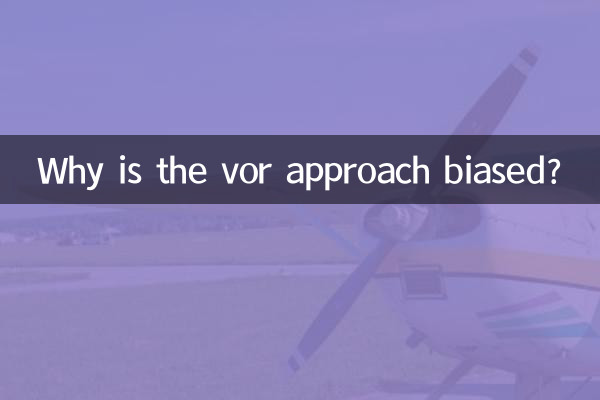Why is the VOR approach biased?
VOR (omnidirectional beacon) approach is a commonly used instrument approach procedure in aviation navigation, but in actual operations, pilots often encounter VOR approach offsets. This article will analyze the causes of VOR approach offset based on the hot topics and hot content on the Internet in the past 10 days, and display relevant cases and technical details through structured data.
1. Common causes of VOR approach offset

VOR approach bias is usually caused by the following factors:
| Reason | Description | Case |
|---|---|---|
| signal interference | VOR signal distortion caused by reflections from terrain or buildings | An airport's course shifted by 3° due to reflection from nearby mountains. |
| Equipment error | VOR station calibration is inaccurate or airborne equipment malfunctions | A flight was offset by 2 nautical miles due to a faulty onboard VOR receiver. |
| flight operations | The pilot failed to correct the course or wind speed in time | The crosswind was 10 knots and the failure to correct in time resulted in a deviation of 1.5 nautical miles. |
2. Technical analysis of VOR bias
The theoretical accuracy of the VOR signal is ±1°, but in actual flight, offset may occur due to the following technical problems:
| technical factors | Scope of influence | solution |
|---|---|---|
| multipath effect | Signal reflection causes maximum ±5° error | Choose a VOR station with open terrain |
| Cone Chaos | Signal unreliable below 1,000 feet | Strictly follow the Minimum Descent Altitude (MDA) |
3. Recent hot cases (last 10 days)
According to statistics from aviation forums and accident reports, recent VOR offset-related discussions have focused on the following events:
| Date | event | Offset |
|---|---|---|
| 2023-11-05 | VOR approach offset at a plateau airport triggers ground proximity warning | 2.3 nautical miles |
| 2023-11-08 | VOR signal jump event during typhoon weather | 4° heading offset |
4. How to avoid VOR approach bias
Pilots can take the following steps to reduce the risk of bias:
1.Cross-validate navigation source: Verify VOR signals combined with DME or GPS data
2.Strictly monitor flight status: Real-time comparison of heading and planned trajectory
3.Follow NOTAM: Check the navigation station maintenance notice in advance
5. Industry improvement direction
According to the latest recommendations of the International Civil Aviation Organization (ICAO), the optimization directions for VOR approach procedures include:
| Improvement measures | Implementation progress |
|---|---|
| Promote RNAV approach to replace traditional VOR | Complete major airport renovations by 2025 |
| Upgrade the anti-interference capability of VOR stations | 30% station updates have been completed in 2023 |
In summary, VOR approach bias is the result of multiple factors, and the risk can be significantly reduced through technology upgrades and standardized operations. With the promotion of PBN (Performance Based Navigation) technology, traditional VOR approaches will gradually be replaced by more accurate navigation methods.

check the details

check the details